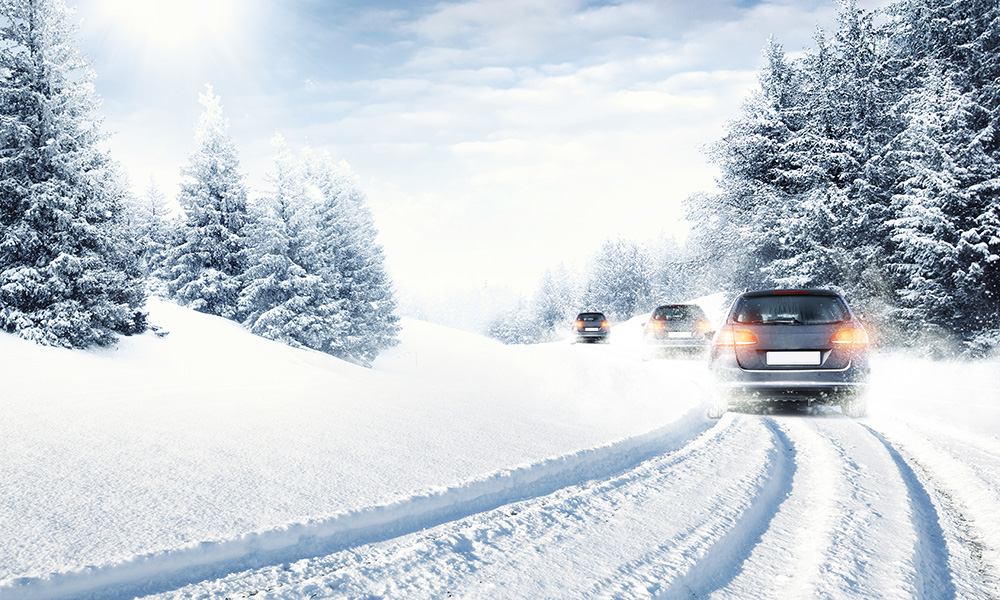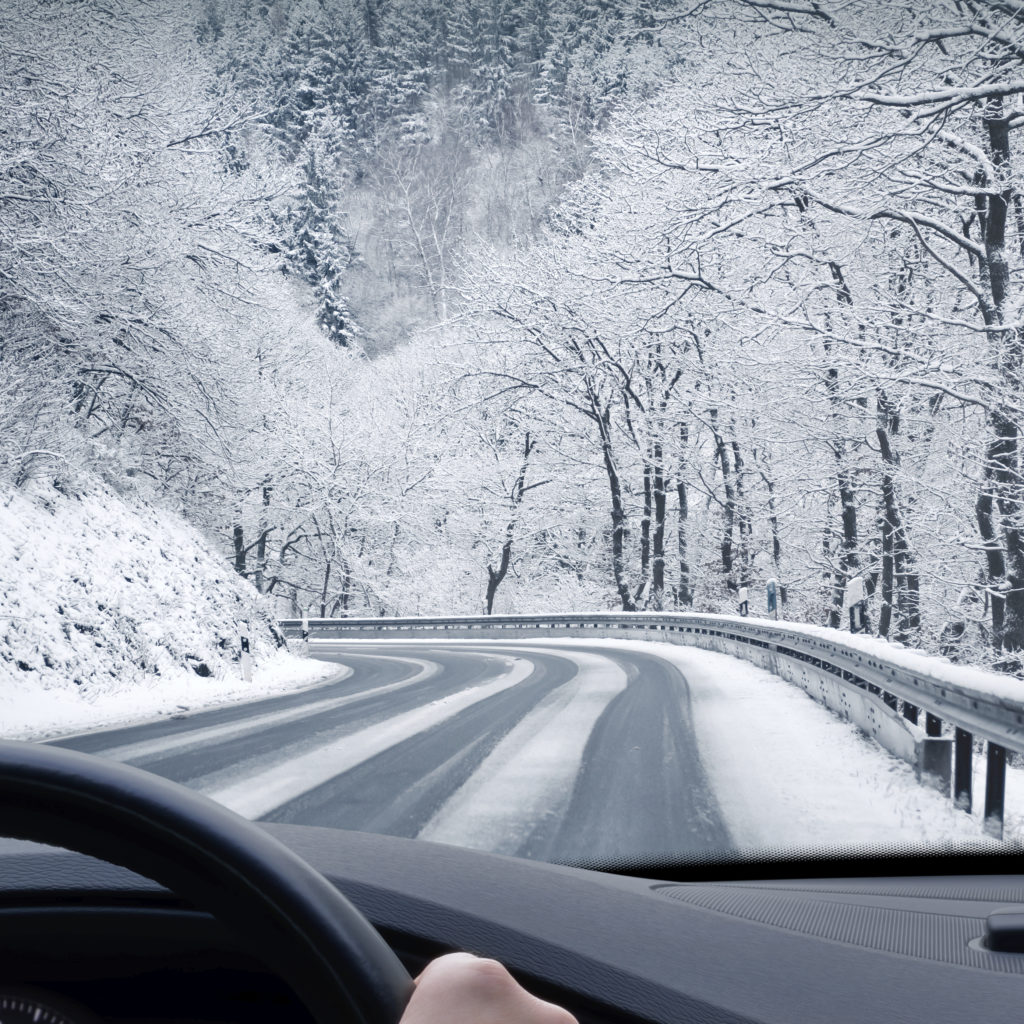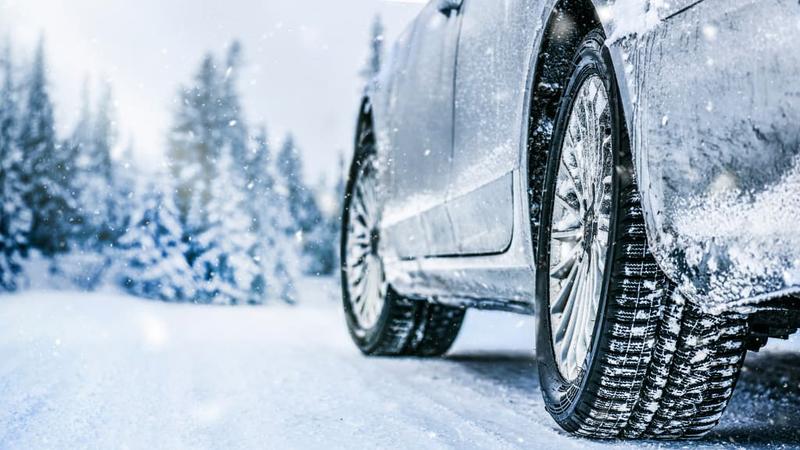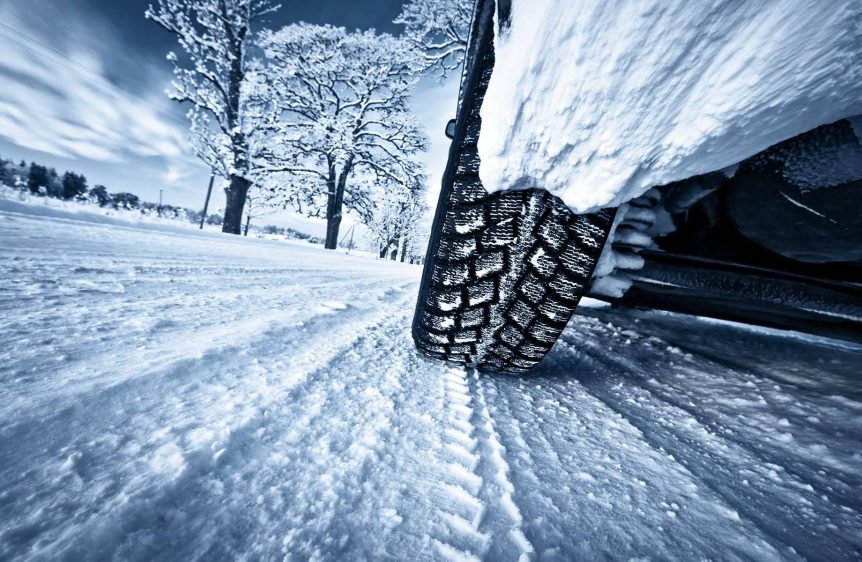Canadian winters are infamous for their frigid temperatures, abundant snowfall and poor driving conditions. Prepare yourself for the road ahead with these helpful driving tips.
Before heading out
Don’t leave your driveway before knowing what lies ahead. Keep these tips in mind before you get behind the wheel:
Weather
Tune into your local radio station for weather reports and road closure notices. If Environment Canada issues an extreme weather warning, it’s best not to drive.

Snowfall
Clean off your entire vehicle before driving. Snow and ice can blow off from your vehicle at high speeds, potentially interfering with other drivers’ visibility.
Timing
Poor weather conditions mean slower and more cautious driving. Leave yourself plenty of time before you head out.
Dress Accordingly
Dress for the weather and take extra clothing to stay warm in case of a breakdown. Don’t forget to pack an emergency kit including a blanket.
Emergency Kit
Pack an emergency kit consisting of an ice scraper, snow brush, shovel, booster cables, snacks, first aid kit, canned candle, matches, flashlight, extra batteries, phone charger, blankets and a tool kit.
Fuel
Keep your fuel tank at least half full. In extremely cold temperatures condensation can build up in a near-empty gas tank, and this can cause the fuel line to freeze-up.

Winter Driving Tips
While you should always be 100% focused on the road while driving, winter conditions require even more focus and attention. Here are a few tips to keep in mind as you hit the road:
Leave plenty of space between you and the vehicle ahead. Stopping distances increase in ice and snow.
Stay on the main roads. It’s unlikely that back routes will be well plowed.
Always keep a phone charger in your car.
You can’t call for help without a charged phone. Plus you’ll need battery power until help arrives.
Avoid using overdrive or cruise control.
You want as much focus and control of your vehicle as possible.
Slow down and move over for emergency vehicles, including tow trucks and service vehicles.
Never pass a snowplow on the right-hand side. This could result in a severe, even fatal collision. Stay well back when you see the blue flashing lights of a snowplow.

Practice emergency braking to understand how your vehicle will react:
If you have anti-lock brakes, put your foot on the brakes and apply firm and continuous pressure. Focus on where you want the car to go and steer in that direction. Do not pump the brakes. Do not remove your foot until your car comes to a stop. Expect to hear noise and vibration as part of the normal ABS operation.
If you don’t have anti-lock brakes, press down on the brake to the point just before the brakes lock. Release pressure and press again, repeating until you come to a complete stop. This is also referred to as “threshold braking.”
Worst Case Scenarios
Roadside emergencies are always stressful, but knowing how to handle one can really make a difference. Here are some helpful tips for common winter mishaps:
Heavy snowfall
Don’t try to drive through dangerous conditions if you’re not confident in your ability to safely do so. Slow down or pull off the road and wait for the bad weather to subside.
Skidding
Skidding happens when your wheels slide out of control on a slippery surface and are mostly caused by driving too fast for road or traffic conditions.
To reduce the likelihood of skidding, accelerate gradually, slow down well in advance of turns and avoid sudden stops.
If you hit an icy patch or find yourself in a skid, don’t panic. To regain control of your vehicle take your foot off the brake or accelerator, and look and steer in the direction you want your car to go.

Trapped in a snowbank
If you find yourself in a snowbank, don’t overexert yourself in an effort to free your vehicle. Going out into a storm puts you at tremendous risk. When it’s absolutely safe, check that your tailpipe is not blocked by snow and return to your vehicle and wait for help.
Breakdown
Activate your four-way emergency lights and attempt to safely pull over to the side of the road. If you are uncertain about your safety and think your vehicle may be struck from behind, do not stay in your vehicle. Leave only if there is a safer area to move to, away from the highway.
If you choose to exit your vehicle, stay away from oncoming traffic and exit through the side of the vehicle facing away from traffic.
If you choose to stay in your vehicle, be sure to wear your seat belt.
Tips courtesy of CAA
THE 905 REAL ESTATE GUYS
info@905realestateguys.com
Sean Kavanagh 905.220.9198
Leo Manchisi 905.334.9650

